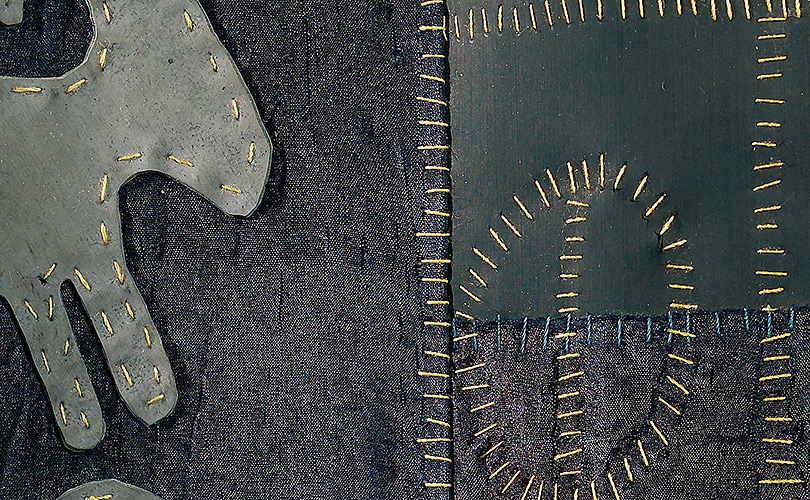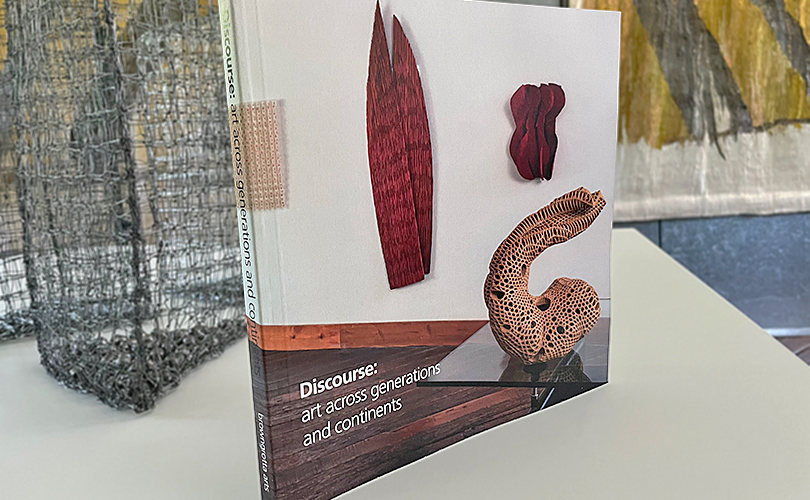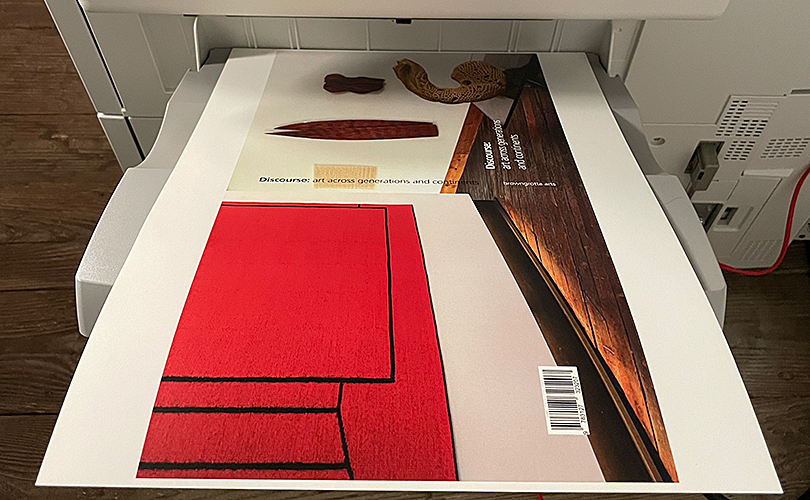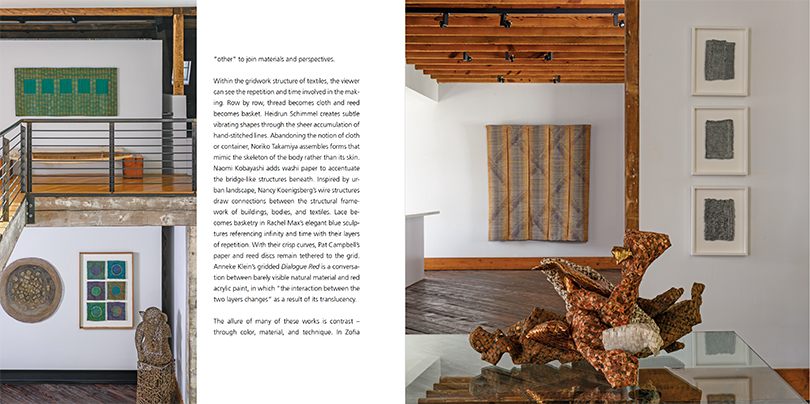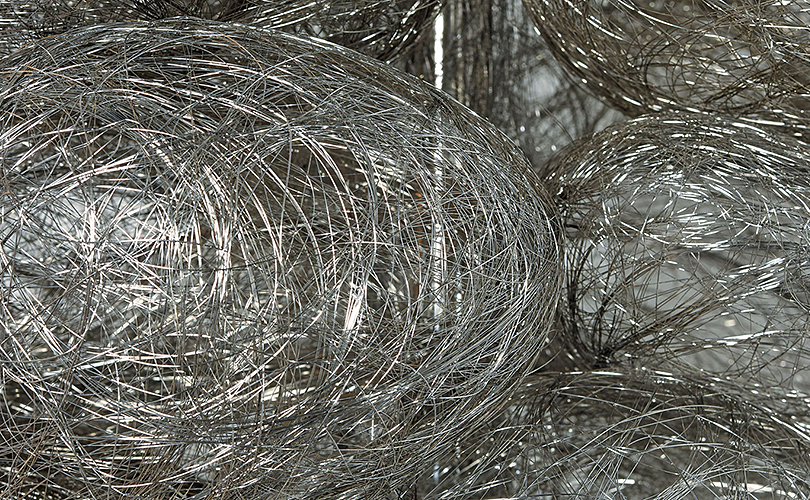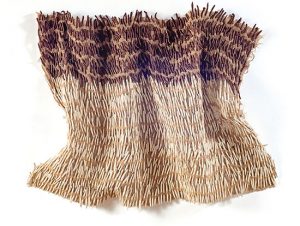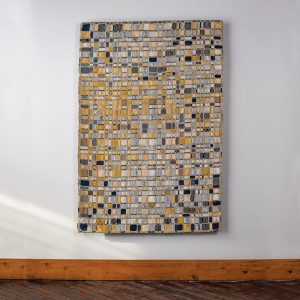Peach Fuzz was the Pantone Color of the Year for 2024, but artists at browngrotta arts don’t seem to be finished with color and adjacent tones just yet. Our Spring exhibition, FIeld Notes: an art survey, featured several works including pink, rose, and related shades.
As the mix between red’s passion and white’s purity, traditionally, pink symbolizes love, nurture and compassion. It also evokes feelings of comfort, warmth and hope. And these are the themes that many of our artists were channeling in these unsettling times.
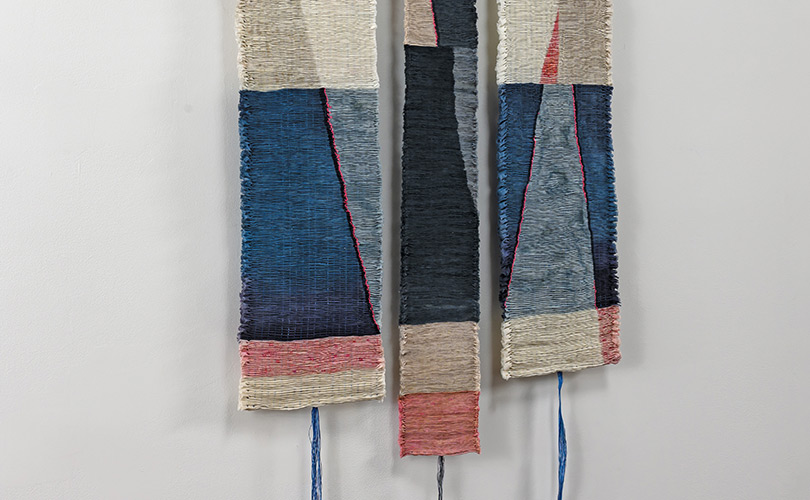
“The language of textiles speaks of entanglements and connectivity ” explains Caroline Bartlett, “of continuity and severance, and pink might be considered as a field for nurture.” For Bartlett, her work Juncture, suggests “a point of time, especially one made critical or important by a concurrence of circumstances.”

Stéphanie Jacques works with a dark pink wire cable in works like Retournement en cours IV to create figures that illustrate transformation. “The cable consists of two twisted copper wires sheathed in plastic film; one white, the other dark pink,” she says. “The varnish that covers them gives a beautiful finish. Sometimes the white is twisted with a red or orange thread, but it’s the dark pink that I prefer.”

Polly Barton’s Pivot is imbued with pink and other colors. Barton finds solace in “[C]reating a surface to rub color in a variety of forms; dye, pigment, pastel, ink. I weave the liminal space between a painted surface and the woven structure.”

Totems, by Wlodimierz Cygan, is a study in color — pink is only one of the shades it reveals through fiber optic lighting. “The introduction of the motif of changing light into this system,” he observes, “turned this small weaving form into a magical, magnetizing object, encouraging meditation.”
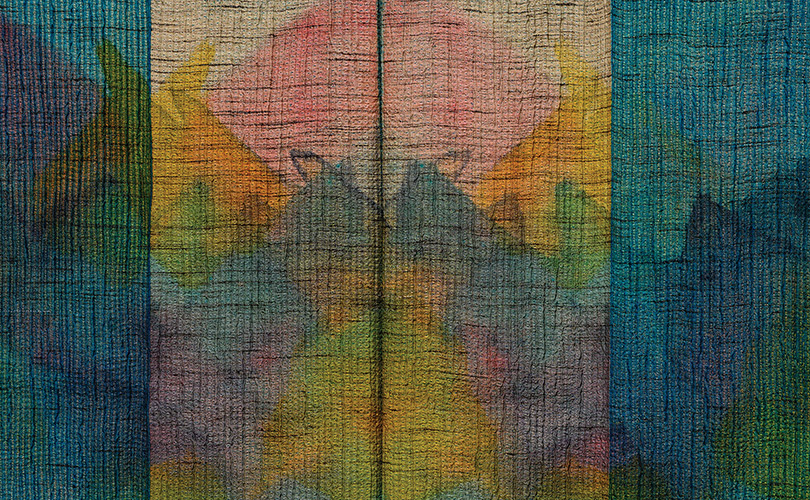
26.5″ x 26.5″ x 2.5″, 2023. Photo by Tom Grotta
Neha Puri Dhir writes eloquently about the color in her work Shifting Horizons. This intimate textile artwork, inspired by Akbar Padamsee’s Metascapes, transforms handwoven silk into a whisper of unseen change. “I have painted the silk with earthy colors,” she says, “gentle teals for my quiet unease, warm yellows for a flicker of hope, and soft pinks for the tender ache in my heart — capturing a shift I feel but cannot see, like a storm brewing beyond the horizon.”

In her work, Emotional Summer, which includes pink and other pastels, Young-ok Shin has a message to convey. “I want to express the power passed down from tradition as work full of vitality that is given meaning, rather than innovation.”

Also expressing a message are Shed on Ice and Dark Shed. “Since moving to a rural community in southern Indiana nearly 20 years ago,” Laura Foster Nicholson reports, “I continue to be fascinated by the simple forms and light of the landscapes.” The mood in Shed on Ice, with its early-morning, rose-colored sky reflects Nicholson’s concern about climate change. “The farms, which seem so evocatively beautiful,” she says, “are contributing radically to climate change.”
You can see more on our website: browngrotta.com.


